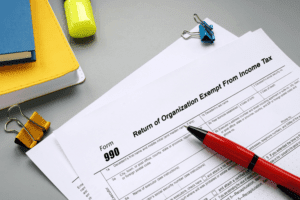
First, it ignores the time value of money, which is a critical component of capital budgeting. For example, three projects can have the same payback period with varying break-even points due to the varying flows of cash each project generates. Whilst the time value of money can be rectified by applying a weighted average cost of capital discount, it is generally agreed that this tool for investment decisions should not be used in isolation.
A modified variant of this method is the discounted payback method which considers the time value of money. Most major capital expenditures have a long life span and continue to provide cash flows even after the payback period. Since the payback period focuses on short term profitability, a valuable project may be overlooked if the payback period is the only consideration.
Discounted Payback Period
The payback period is the amount of time it would take for an investor to recover a project’s initial cost. As you can see, using this payback period calculator you a percentage as an answer. Multiply this percentage by 365 and you will arrive at the number of days it will take for the project or investment to earn enough cash to pay for itself.
The first column (Cash Flows) tracks the cash flows of each year – for instance, Year 0 reflects the $10mm outlay whereas the others account for the $4mm inflow of cash flows. GoCardless helps businesses automate collection of both regular and payback equation one-off payments, while saving time and reducing costs. On the other hand, payback period calculations can be so quick and easy that they’re overly simplistic. There are some clear advantages and disadvantages of payback period calculations.
Discounted Payback Period: What It Is, and How To Calculate It
The situation gets a bit more complicated if you’d like to consider the time value of money formula (see time value of money calculator). After all, your $100,000 will not be worth the same after ten years; in fact, it will be worth a lot less. Every year, your money will depreciate by a certain percentage, called the discount rate. Note that in both cases, the calculation is based on cash flows, not accounting net income (which is subject to non-cash adjustments). Below is a break down of subject weightings in the FMVA® financial analyst program. As you can see there is a heavy focus on financial modeling, finance, Excel, business valuation, budgeting/forecasting, PowerPoint presentations, accounting and business strategy.

Next, the second column (Cumulative Cash Flows) tracks the net gain/(loss) to date by adding the current year’s cash flow amount to the net cash flow balance from the prior year. Before you invest thousands in any asset, be sure you calculate your payback period. My Accounting Course is a world-class educational resource developed by experts to simplify accounting, finance, & investment analysis topics, so students and professionals can learn and propel their careers. Since IRR does not take risk into account, it should be looked at in conjunction with the payback period to determine which project is most attractive. Over 1.8 million professionals use CFI to learn accounting, financial analysis, modeling and more. Start with a free account to explore 20+ always-free courses and hundreds of finance templates and cheat sheets.
Definition: What is Payback Period?
Using the averaging method, you should divide the annualized expected cash inflows into the expected initial expenditure for the asset. This approach works best when cash flows are expected to be steady in subsequent years. While the payback period shows us how long it takes for the return on investment, it does not show what the return on investment is.
- Forecasted future cash flows are discounted backward in time to determine a present value estimate, which is evaluated to conclude whether an investment is worthwhile.
- The payback period is favored when a company is under liquidity constraints because it can show how long it should take to recover the money laid out for the project.
- The sooner the break-even point is met, the more likely additional profits are to follow (or at the very least, the risk of losing capital on the project is significantly reduced).
- It can be used by homeowners and businesses to calculate the return on energy-efficient technologies such as solar panels and insulation, including maintenance and upgrades.
- Company C is planning to undertake a project requiring initial investment of $105 million.
